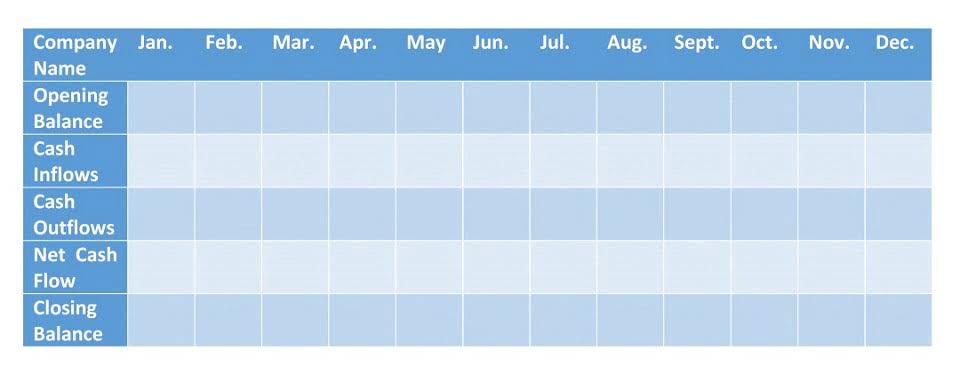
Understanding your company’s finances is an essential part of running a successful business. That’s why it’s important to get to know all of the different terminology relating to accounting, and how these financial metrics can be used to assess the financial health of your business. Regularly monitor actual overhead costs and compare them to the budgeted amounts. By carefully considering these factors, businesses can determine an overhead rate that provides a reasonable basis for allocating overhead costs and managing profitability.
- Therefore, the single rate overhead recovery rate is considered inappropriate, but sometimes it can give maximum correct results.
- A number of possible allocation bases are available for the denominator, such as direct labor hours, direct labor dollars, and machine hours.
- The Applied Overhead Calculator is a crucial tool in manufacturing and project management that helps businesses allocate overhead costs accurately based on actual activity levels.
- This method ensures that each job is charged for the overhead it incurs, leading to more accurate job cost records and enabling businesses to price their products or services more effectively.
- In this example, the guarantee offered by Discount Tire does not include the disposal fee in overhead and increases that fee as necessary.
How do I know if a cost is overhead or not?
The ABC method involves identifying and assigning overhead costs to specific activities that are required to produce goods or services. It then divides the total overhead costs for each activity by the corresponding activity volume to derive the predetermined overhead rate for that activity. The ABC method is more complex than the traditional method but can provide more accurate and granular overhead cost allocation. Overhead costs are then allocated to production according to the use of that activity, such as the number of machine setups needed.

Type I Error Calculator

At a later stage, when the actual expenses are known, the difference between that allocated overhead and the actual expense is adjusted. Properly calculating and applying overhead rates is an important accounting process for businesses to absorb Accounting For Architects indirect costs into their job costing system and product pricing. For instance, assume the company is bidding on a job that will most likely take $5,000 of labor costs. The management can estimate its overhead costs to be $7,500 and include them in the Medical Billing Process total bid price. We can calculate predetermined overhead for material using units to be allocated. For example, we can use labor hours worked, and for calculating overhead for the store department, predetermined overhead rate we can use the quantity of material to be used.
Selecting an Estimated Activity Base
- The overhead will be allocated to the product units at the rate of 10.00 for each machine hour used.
- To tackle this problem predetermined overhead rates are used instead of actual overhead rates.
- A predetermined overhead rate (OH) is a critical calculation used by businesses to allocate manufacturing overhead costs to products or services.
- Finally, as discussed above, some businesses may calculate their predetermined overhead rates based on historical information.
- It allows overhead to be assigned to production based on activity (DLHs), providing insight into profitability across products.
- Let’s say we want to calculate the overhead cost of a homemade candle ecommerce business.
- Therefore, the business must use a predetermined overhead rate to budget its expenses for the future.
A company that excels at monitoring and improving its overhead rate can improve its bottom line or profitability. Explore the strategic role of predetermined overhead rates in enhancing financial management, predetermined overhead rate budget accuracy, and cost control mechanisms for businesses. The period selected tends to be one year, and you can use direct labor costs, hours, machine hours or prime cost as the allocation base. When multiple departments or divisions within a company operate as separate profit centers, predetermined overhead rates facilitate the allocation of shared costs.

If this is consistent for many projects in that department over the past year, then predetermined overhead for that department would be computed by multiplying the estimated cost for direct labor by 150%. Overhead for a particular division, product, or process is commonly linked to a specific allocation base. Allocation bases are known amounts that are measured when completing a process, such trial balance as labor hours, materials used, machine hours, or energy use. A predetermined overhead rate (POHR) is a rate that is used to allocate overhead costs to products or services.

- As a result, there is a high probability that the actual overheads incurred could turn out to be way different than the estimate.
- Built-in analytics help uncover spending trends and quickly flag unusual variances for further investigation.
- This rate helps in budgeting, pricing, and financial planning by estimating overhead costs in advance rather than waiting for actual figures.
- The use of predetermined overheads effectively incorporates the cost effects of seasonal variations in the product cost and price.
- The overhead is then applied to the cost of the product from the manufacturing overhead account.
- First, they can help businesses to more accurately estimate the cost of their products or services.
- However, since budgets are made at the start of the period, they do not allow the business to use actual results for planning or forecasting.
The formula for calculating Predetermined Overhead Rate is represented as follows. Various tools help in calculating and applying predetermined overhead rates effectively. Predetermined overhead rate is the estimated overhead that will allocate to each product at the begining of accounting period. It is equal to the estimate overhead divided by the estimate production quantity. The overhead rate of cutting department is based on machine hours and that of finishing department on direct labor cost.
Overhead Allocation Accuracy
The management concern about how to find a predetermined overhead rate for costing. Various activity and cost bases can be used, including direct labor hours, machine hours, and production units. The choice of activity base depends on the nature of the overhead costs and the contribution margin production process. While predetermined overhead rates are widely used and needed for businesses, they may have some limitations. A business needs to estimate its total overheads for a period and estimate its total units or activity basis for the predetermined overhead rates.


